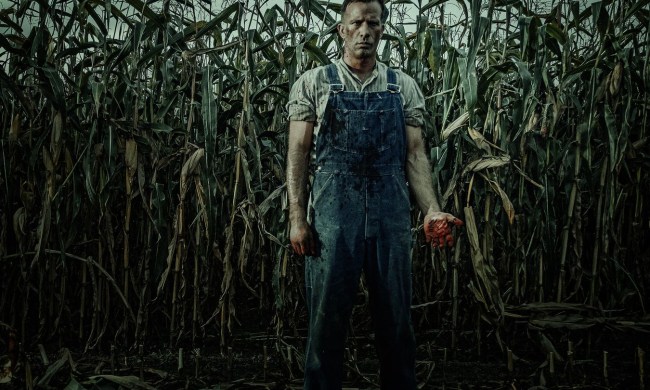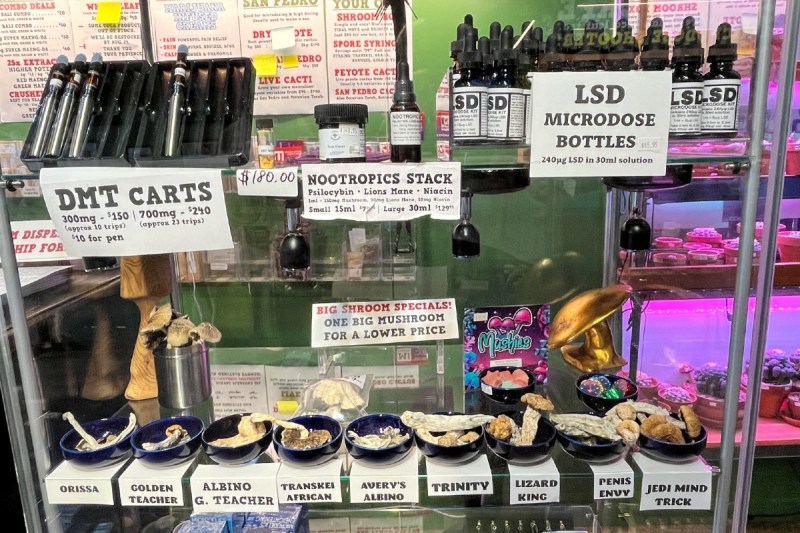
Thanks to a combination of inclination, access, and timing, I am among the most experienced psychedelic users in history. We’re living in an era when a more or less comprehensive range of psychedelics from around the globe are relatively easy to acquire, and I also happen to have been reared in the Pacific Northwest where the availability and use of these substances have long been uniquely liberalized. And I have leveraged that access abundantly over the past 20 years, tripping well into many hundreds of times — very likely pushing or perhaps even surpassing a thousand — spanning all the classic hits, including psilocybin mushrooms, LSD, MDMA, DMT, ketamine, and a smattering of rarer finds.
This almost certainly places me in the top fraction of a percentile of psychedelic drug users across time, and I haven’t lost my mind or my taste for these strange substances. Quite the opposite. I am a radical proponent of their use. Let me put it this way: When I interviewed Michael Pollan about psychedelic drugs a while back, in his very reasonable, well-considered way, he joked that more testing was needed before we just pour LSD into the water supply — I’m more inclined to suggest we just go ahead and dump it in already.
That’s probably not going to happen anytime soon, but in the meantime, people will still be sampling this forbidden fruit, whether at home, in psychedelic therapy, in their preferred natural space, or at Coachella. In any case, these are powerful, potentially life-altering drugs, and the experience isn’t something you should undertake too lightly. Accordingly, here are a few things I’ve learned over the course of countless psychedelic trips that will help you make the most out of the experience, not only in terms of enjoyment and safety, but also the more profound benefits you may encounter.
“Set and setting”
Coined by LSD vanguard Timothy Leary, the phrase has been repeated so often that it borders on a cliché, but the cliché is accurate: Set and setting are the two key determinants to any psychedelic experience. “Set” describes what you bring to the situation — your mental state, physical health, fatigue state, education level, drug dosage, and so on. Your “setting,” on the other hand, is the situation you are in — the environment, people, material items, and even your socio-political circumstance.
At the risk of oversimplification, everything external is “setting” while everything internal or involving your own body is “set.” Let’s look at what you can do to maximize each.
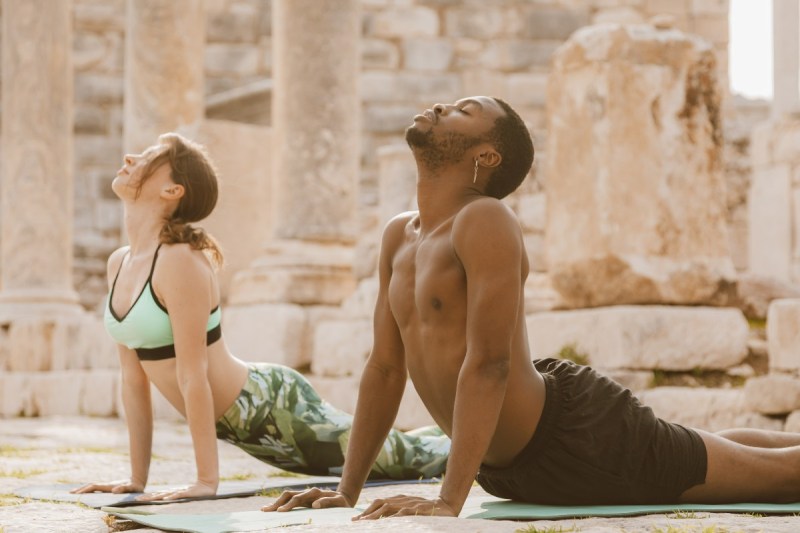
Adjusting your “set”
Whether you’re mentally well and curious about how psychedelics can increase wellness, or experiencing some form of mental distress and are seeking the benefits suggested by psychedelic therapy researchers, there are a number of things you can do to “set” yourself up for it.
Know when the timing isn’t right
First of all, it’s never wise to take psychedelics when you’re actively engaged in a mental health crisis. At worst, psychedelics can cause those with a predisposition to disorders like schizophrenia to have a psychotic break (the risk must be pointed out, but it should also be pointed out that this risk is extremely unlikely), while at best it can cause the experience to be so upsetting or confusing that there’s no opportunity to explore the potential benefits. So if you’re feeling particularly upset or are undergoing an acute mental health episode of any kind, it’s best to wait for a moment when things are more settled.
Calm your mind
In any case, you can benefit from pre-trip activities to calm your mind — yoga, meditation, journaling, art, and the like. Going for a run or otherwise exercising. Watching an inspiring film. You get the picture.
Prepare your body
It’s also helpful to prepare yourself physically. Again with the yoga, but also your eating habits in the days or even weeks leading up to the experience. A healthy body — whatever that looks like for you — is the foundation of a healthy mind and healthy psychedelic journey.
And even on a more directly practical level, healthy eating — particularly in the hours leading up to the trip — can determine whether you get nauseous or experience gastrointestinal distress, or how much energy you have over the course of the whole thing. Some people recommend that you fast the morning of, but I advise that people eat a light meal a few hours beforehand to ensure they have plenty of energy for… what is to come. Stay away from heavy meats and gut-busting carbs, and lean toward fruit, veggies, light breads, etc.
Get educated
There’s absolutely no way for you to understand what a psychedelic experience is like until you actually go through one. That being said, it is vastly beneficial for you to enter it with as much preparatory knowledge as possible. Read about what the experience is like for the specific drug you’ll be taking. Talk with someone who has tried it before and watch with bemusement as they do their best to explain what cannot be put into words.
Even beyond psychedelics themselves, it doesn’t hurt to have at least a vague idea about various philosophical, psychological, and spiritual principles. These can help interpret, integrate (more on that below), and communicate your experience.
Dose wisely
Much has been said recently about the so-called “heroic dose” of mushrooms, but don’t go into things thinking you need to take a large quantity of whatever drug to impress others or get the most out of the experience. In fact, it’s often difficult to even remember what happened when you take too much.
Start with small doses and then build up. As has often been pointed out, you can always take more, but you can’t take less.
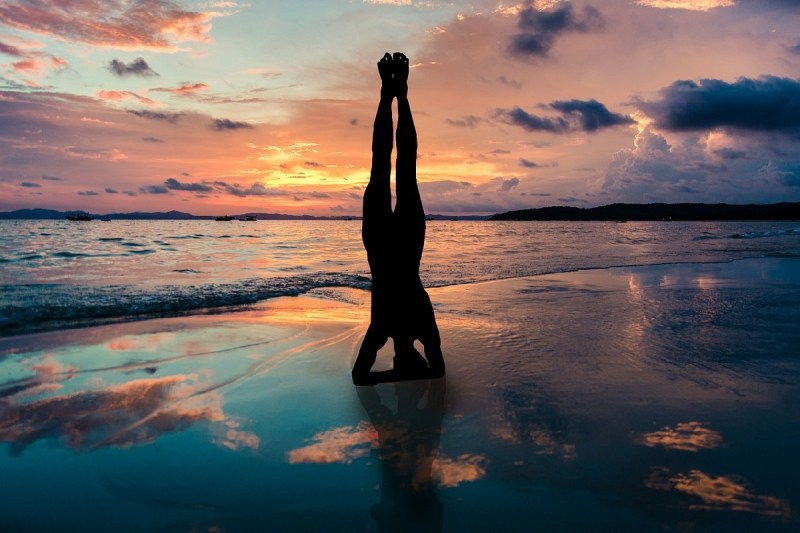
Fine-tuning your “setting”
When it comes to your environment, three concerns are foremost: the space you’re in, the people you’re with, and the material objects available. These can be tweaked endlessly, but here are a few things that I’ve found are paramount to a great psychedelic setting.
Physical and legal safety
Avoid taking psychedelics — or any drug, really — anyplace where you aren’t relatively safe both legally and physically. That means there are minimal opportunities to injure yourself (it’s common to experience a lack of coordination at various points during a trip).
Indoors vs. outdoors
In an ideal circumstance, you will have some form of access to nature, whether that means you’re out in a forest or the desert, near a park, or even just have a little yard where you can safely venture outdoors. It’s nice, however, to have a place to escape indoors too, especially if there are other, non-tripping people outside.
Choose your companions carefully
Few things impact your experience like bad company. Maybe that means they’re annoying or lacking in compassion, or they have extreme psychological issues, or you just plain don’t trust them. Whatever the case, choose your trip companions wisely.
If you’re going to have a therapist on hand, make sure it’s someone you trust and feel comfortable with, because you’ll be in an acutely vulnerable situation. And if you’re going to be tripping with friends, make sure they’re people who you can count on to — for lack of a better phrase — keep their sh** together.
The best trip companions are empathetic, funny, brave, and reliable. Now, it can be difficult to see who fits these descriptions until you’re actually on the stuff, because sometimes psychedelics will bring incredible humor out of the most typically humorless people, or can draw forth bravery from the ordinarily meek.
Go with your instincts. If you feel weird about tripping with someone, trust that feeling.
The right stuff
Surrounding yourself with the right material goods can dramatically improve your experience. I consider music, instruments, art or eye-engaging decor, plenty of fresh (sometimes sparkling) water, and certain foods to be important if not downright essential.
Music and art are pretty subjective, but there are a few foods that should go on every psychedelic grocery list: fresh fruit, fresh bread, and sparkling water. These are light, easy-to-eat foods that will keep you nourished throughout the journey and can also help in the event that nausea rears its head.
It’s also a smart idea to have someplace soft to recline — a bed or couch with pillows and blankets will almost always come in handy — and a campfire to sit around.
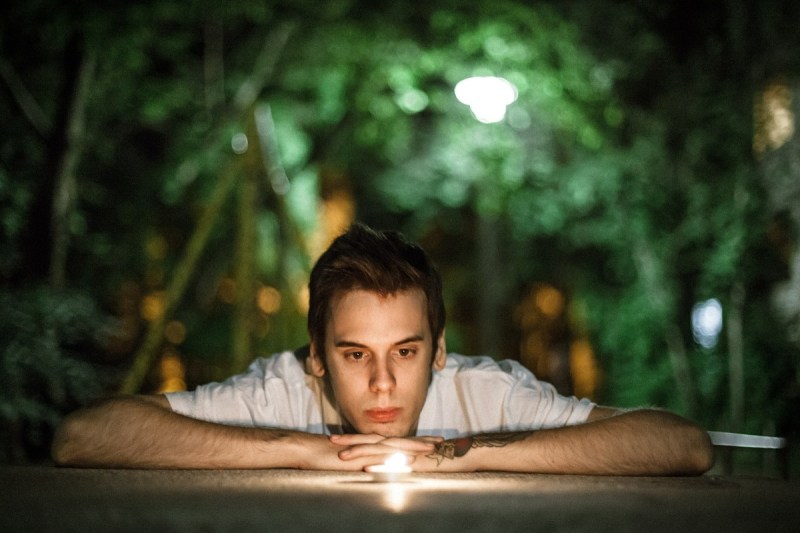
Integration
These days, you’ll hear a lot of talk in the psychedelic therapy community about “integration.” While it comes in many forms, it’s essentially the practice of reflecting on your experience so you can better integrate the lessons and symbols it has imparted into your everyday life.
Meditation, talk therapy, art, journaling, or simply sitting around talking with your friends about what happened — all of these are potential methods of integration. What this practice looks like is largely up to you, but whatever the case, make sure you make time to consider the experience.
Psychedelics have a way of imparting transformation no matter what you do. When I was first starting out with them, I certainly wasn’t thinking about “set” or “integration,” but would just toss back some weird chemicals and see where things went from there. Let me tell you — plenty of insights can be stumbled upon via this more haphazard route. But I also know from experience that more — sometimes substantially so — can be gleaned from proper preparation, or at the very least the whole ordeal can be made a lot more enjoyable.
And on that note, one final piece of advice: It’s OK to have fun! I think that sometimes the modern psychedelic movement has a tendency to be overly clinical and stoic, but psychedelics are strange stuff indeed. Sometimes you’re going to feel fantastic. Sometimes you’re going to feel crazy. Sometimes you’re going to feel ecstatic. Great! Feel good! Laugh!
It’s your experience. Make of it what you will.


